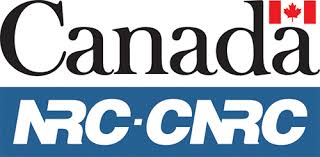Design and Optimization of Plastic Liner for On-Board Hydrogen Storage Tanks Using Blow View Software
Session 1A: Automation in Blow Molding
Tuesday, October 8, 2024
3:15 p.m.. to 3:45 p.m.
(see full conference schedule)
Presentation Description:
A key challenge to the widespread commercialization of fuel cell electrical vehicle, is to design compact and cost effective on-board Compressed Gaseous Hydrogen tanks which store sufficient quantities of H2 without sacrificing passenger and cargo space. The first generation of FCEVs use 700 bar Type IV pressure vessels to store hydrogen. These vessels have a cylindrical Blow Molded Plastic Liner (BMPL), overwrapped by carbon-fiber composite material to maintain the internal pressure, which serves as a hydrogen gas permeation layer. However, due to its small molecular size, H2 permeates through the plastic liner wall. This represents a serious issue that should be addressed early in the design stage in order to minimize H2 emissions from the liner and conform to legal safety requirements and standards. Meanwhile, automotive OEMs and their suppliers are being challenged to design longer and thinner liners with very consistent wall thickness. One way to meet the hydrogen permeation rate requires a judicious choice of liner material. In the thermoplastic forming industry, it is still common practice to rely on trial and error to find the appropriate barrier layer configuration/thickness required to meet the permeation rate limit requirement. A tool offering a more efficient alternative, based on reliable predictive/virtual analysis of the H2 diffusion through the BMPL wall, could significantly shorten the design/development cycle by allowing product prototypes to be analyzed and tested virtually. A finite element-based model that could help a designer better understand barrier layer properties was integrated in the latest version of NRC’s H2-BlowView software. The mathematical diffusion model adopted is based on Fick’s diffusion law to predict H2 diffusion through a polymeric wall. Promising results, in terms of H2 permeation rate on an industrial BMPL, will presented during the presentation.
Speaker Biography:
Zohir Benrabah is a Forming and Blow Molding Simulation Scientist at NRC’s Automotive and Surface Transportation Research Center in Boucherville, Quebec, Canada, where he is involved in the development of the finite element software, BlowView, dedicated to simulating and optimizing blow molding processes such as: Conventional and Twin Sheet Extrusion, Stretch, Thermoforming, and most recently Suction Blow Molding. His principal interest is in process numerical modeling and problem solving type work, typically combining numerical and experimental components. Zohir holds a Bachelor and Master degree in Mechanical Engineering and he completed his Ph.D. in 2002 in computational structure at Laval University in Quebec City, Canada. He has written over 40 papers on the simulation of thermoplastic forming processes.


